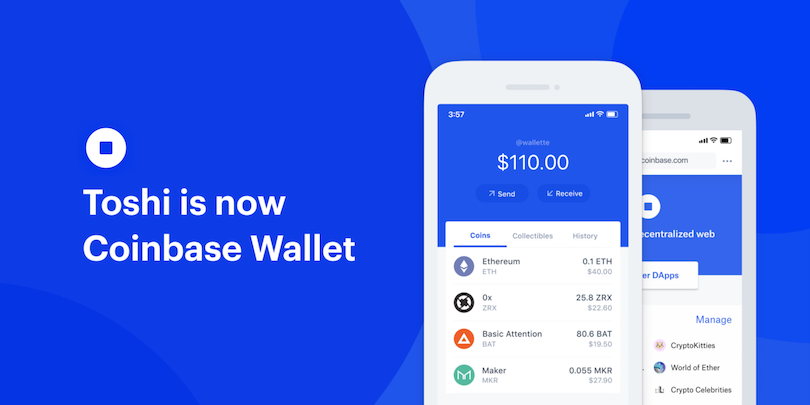Coinbase is working at break speed to challenge perceptions that Bitcoin and crypto-related businesses have major pain points regarding trust and security. As part of its strategy to build an open financial system for massive mainstream adoption, the San Francisco-based cryptocurrency exchange unveiled three major steps this week.
- Coinbase acquisition of San Francisco-based startup Distributed Systems Inc.
- Coinbase patent filing for a new Bitcoin payment portal
- Coinbase re-launch of the Coinbase Wallet with new integration of the open-source DApp Toshi
On Wednesday, Coinbase acquired Distributed Systems, founded in 2015, to help build a digital economy that incorporates solid solutions for validating and verifying identity. The move is meant to address identity theft and redundant verifications.
With SIM card hacking, online identity theft and fears about compromised private and personal digital data, Coinbase is trying to tackle a major obstacle for crypto adoption.
The company believes “decentralized identity systems represent a transformative shift in our relationship with technology.”
By handing out Social Security numbers to banking agents, government agents, prospective landlords and employers, consumers invite risk, fear of fraud and identity theft.
The collaboration between Coinbase and Distributed Systems is designed to change that dynamic. “A decentralized identity will let you prove that you own an identity, or that you have a relationship with the Social Security Administration, without making a copy of that identity,” writes B Byrne, project manager for Coinbase?’s Identity team.
The real key is to allow the blockchain to verify a person’s identity without any individual having to reveal their SSN or other sensitive information.
“Blockchain technology that powers cryptocurrencies offers a new way to let us all be ‘verified’ everywhere we go on the internet, feeling safer about our interactions with others and opening the door to the experiences that require trust,” Byrne writes.
[the_ad id="42537"]
[the_ad id="42536"]
Also on Wednesday, Coinbase announced that the open-source decentralized app Toshi is becoming Coinbase Wallet, a standalone wallet app. Toshi was developed by Coinbase about a year ago. If you’re already using Toshi, the company says it will automatically upgrade to the Coinbase Wallet shortly. It allows users to store their private keys.

“We believe that the applications of the future will be built on a decentralized internet (the blockchain). Everyone will own a crypto wallet that allows them to access decentralized applications (dapps) and that wallet will be their gateway to the open financial system,” writes Coinbase developer Siddharth Coelho-Prabhu.
The Coinbase Wallet suite of features allows users to
- Manage ETH and all your ERC20 tokens (with BTC, BCH and LTC in the near future)
- Receive airdrops and ICO tokens
- Buy and store crypto collectibles? (unique and unreplicable) and use them in games, or trade them on marketplaces
- Send payments to anyone anywhere, without geographical borders or fees
- Access leading decentralized exchanges and relayers to buy and sell tokens
- Explore the full universe of third party DApps that enable everything from taking out a loan or lending to others on the blockchain to earning crypto by answering questions, performing services, or completing tasks
Coinbase has also recently filed for a patent to make Bitcoin payments more secure. Filed on August 14, the patent’s technology provides a solution for maintaining security over private keys while allowing consumers to use their Bitcoin wallets to pay merchants.
The tech would allow a checkout transaction to be “frozen” through a “key ceremony” that has master key functions — encrypting private keys and transaction signing. While users can spend crypto, they’ll also have the ability to stop payments.
“At any point in time after the master key is loaded, the system can be frozen. The system can be unfrozen after it has been frozen using keys from the key ceremony. The checkout process can be carried out when the system is frozen and when the system is unfrozen. The payment process can only be carried out when the system is unfrozen.”
The patent also details the development of an API, through which the system can be deployed across the internet for e-commerce.






